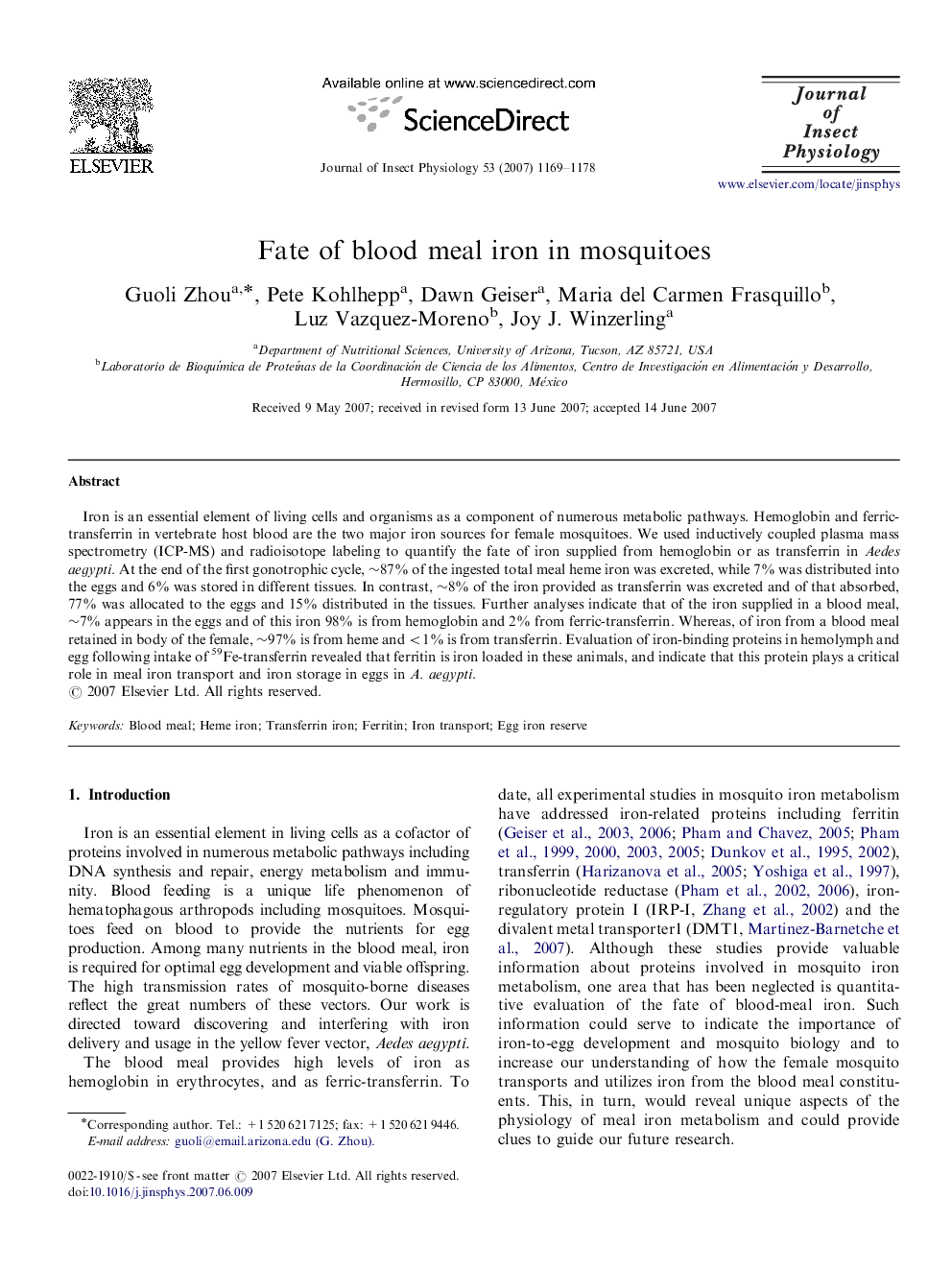| Article ID | Journal | Published Year | Pages | File Type |
|---|---|---|---|---|
| 2841539 | Journal of Insect Physiology | 2007 | 10 Pages |
Iron is an essential element of living cells and organisms as a component of numerous metabolic pathways. Hemoglobin and ferric-transferrin in vertebrate host blood are the two major iron sources for female mosquitoes. We used inductively coupled plasma mass spectrometry (ICP-MS) and radioisotope labeling to quantify the fate of iron supplied from hemoglobin or as transferrin in Aedes aegypti. At the end of the first gonotrophic cycle, ∼87% of the ingested total meal heme iron was excreted, while 7% was distributed into the eggs and 6% was stored in different tissues. In contrast, ∼8% of the iron provided as transferrin was excreted and of that absorbed, 77% was allocated to the eggs and 15% distributed in the tissues. Further analyses indicate that of the iron supplied in a blood meal, ∼7% appears in the eggs and of this iron 98% is from hemoglobin and 2% from ferric-transferrin. Whereas, of iron from a blood meal retained in body of the female, ∼97% is from heme and <1% is from transferrin. Evaluation of iron-binding proteins in hemolymph and egg following intake of 59Fe-transferrin revealed that ferritin is iron loaded in these animals, and indicate that this protein plays a critical role in meal iron transport and iron storage in eggs in A. aegypti.
